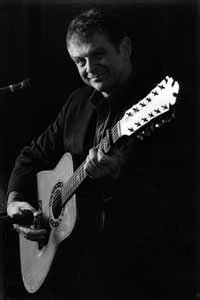
|
| Bob Gibson and his 12-string guitar. |
Bob Gibson was born on November 16, 1931 in Brooklyn and grew up along the Hudson River north of New York City where he sang in the church choir. When he left high school in his senior year, he hitchhiked around the country, eventually returning to New York City to become a partner in a firm which taught speed-reading. In 1953 he met Pete Seeger and was so impressed with Pete and his music, he "took the money I had set aside for rent" and bought a banjo. Immersed in the study of folk music, he learned to play the banjo, quit his job and hit the road to collect songs.
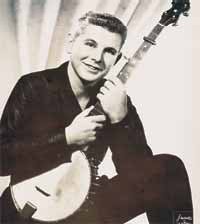 | 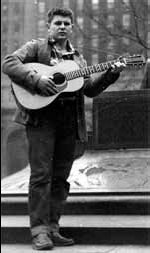 |  |
| "Sing for the song, boy, just like you did when you stood on that corner and didnít even feel the cold…" | ||
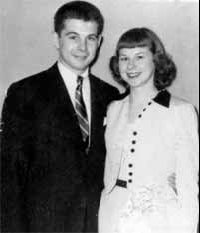
|
|
Bob and wife Rose in 1952. "You spent the rent money on a WHAT???" |
By the age of 22 Bob was performing at schools, ladiesí social clubs, lounges, cabarets, and cruise ships from New York to Miami, from the Bahamas to Cleveland, finally landing in Chicago. There he met the man who would become his manager. Albert Grossman had a new idea for a folk club and in 1956 launched The Gate of Horn where he signed Bob for what turned out to be an 11-month engagement ó first as an opening act and later as a headliner. By 1958, this 26-year old husband and father of three had recorded four albums on Riverside, appeared as a regular on the Arthur Godfrey show, helped launch the Hootenanny craze in New Yorkís Greenwich Village, and was well on his way to becoming a legend in Chicago, not to mention a major force in the folk renaissance. Indeed, as groups sprung up in ever increasing numbers, it was difficult to find any new album that didnít contain at least one Gibson song.
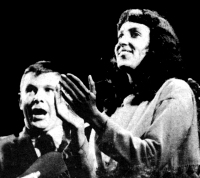
|
| Bob with a 19-year old Joan Baez at the í59 Newport Folk Festival. |
Bobís eye for new talent was matched by his willingness to share the spotlight. Often in his travels he would run across an unknown performer with great promise whom he would bring to Chicago to be his opening act ó Joan Baez and Judy Collins to name but two. In 1959, at the Newport Folk Festival, Bob Gibson became the first to introduce Joan Baez to a national audience.
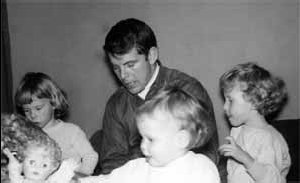
|
| "Thatís right, kids, two-of-a-kind beats four aces. Looks like Dad wins again." |
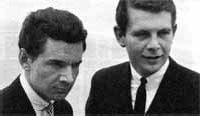
|
| Shel Silverstein said Gibson and Camp "looked like two crooked English jockeys fixing a race." They did. |

|
| Late '50s Promo. |
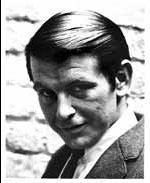 | 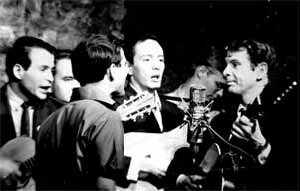 |
| Folk's bad boy, 1965. | Dick Rosmini, Fred Neil and Bob, circa 1964. |
By 1964 Gibson had recorded four best-selling albums for Elektra but as the í60s began changing from the age of innocence to the age of turbulence, so did Bobís career. His addiction and substance abuse problems eventually led to a self-imposed hiatus from the music business. In 1966 he left Greenwich Village and moved his family to upstate New York where he dabbled in woodworking, dealt with being a father and tried to come to terms with his life.
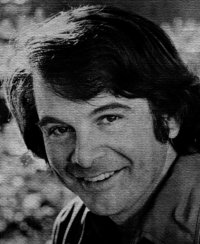
|
| Early '70s promo. |
By 1969, when Bob resurfaced on the club scene in New York and Chicago, the immense popularity once enjoyed by folk music had waned. It would never be the same. Rock íní roll was here to stay. Although many of the new eraís biggest artists ó from Buffalo Springfield to Crosby, Stills and Nash, from Richie Havens to The Byrds and Flying Burrito Brothers ó acknowledged Gibsonís seminal influence, Bob himself was no longer a superstar. He landed in Los Angeles where he recorded his first album in a half dozen years. As his odyssey continued, it took him north to the tiny seaside hamlet of Mendocino. There he embarked on a new period of productivity that would ultimately lead him back to Chicago. Always ahead of the curve, Bob recorded Funky in the Country on his own label, Legend Enterprises. Later, he once again teamed up with his old friend, Hamilton Camp, to record Homemade Music.
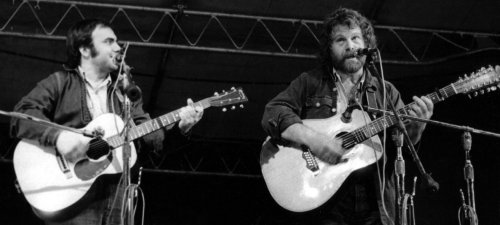 |
| Steve Goodman with Bob, 1973 Philadelphia Folk Festival. Photo by Steve Ramm, from the book Steve Goodman: Facing The Music by Clay Eals. |
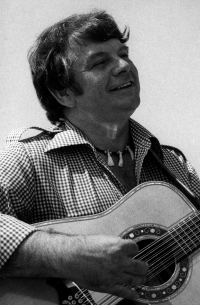
|
| In the early í80s ó clean and sober ó with a new lease on life. |
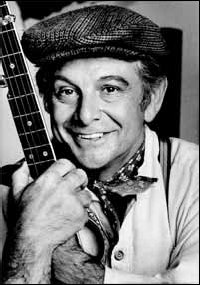
|
| Appearing in his play, "The Courtship of Carl Sandburg," 1984. |
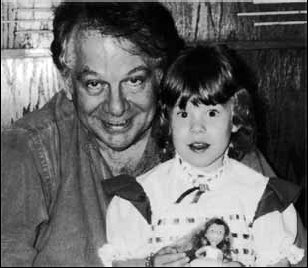
|
| Bob and daughter Sarah, fatherhood redux 1991. |
Some say Bobís glory years were those from the late í50s to the early í60s when his popularity was high, his influence strong and the money rolled in. In fact, his real glory years began in 1978 when he got clean and sober. With his drug and alcohol use finally behind him, he at long last achieved an inner peace and happiness that began to show in his singing, playing and writing. For the next decade and beyond, Bob explored new territories. His voice was strong and his playing still featured his trademark 12- string with its rolling bass lines. His creative output was once again prolific. He taught songwriting at the Old Town School of Folk Music, Portland State University and the American Conservatory of Music. He wrote, scored and appeared in a musical play, The Courtship of Carl Sandburg. He opened his own restaurant and entertainment club, Hobsonís Choice. He produced a number of his own recordings as well as several albums for friend and folk icon Tom Paxton. He toured with Best of Friends, a trio consisting of Bob, Tom and Anne Hills. (Their 1985 recording at Holsteinís in Chicago was finally released in 2004, seven years after Bobís death.) Also at Holsteinís, Bob once again reunited with Camp as they re-recorded their entire 1961 watershed album, now calling it Gibson & Camp, the Gate of Horn Ė Revisited. Finally, during the late í80s, Bob concentrated heavily on writing, recording and performing for kids. His Uncle Bobís television show, Flying Whales and Peacockís Tales, was nominated for an Emmy. On the domestic front, he remarried and had a second chance at fatherhood. Yes, these were the glory years.
But by the late í80s Bob was starting to experience the early stages of a debilitating disease that ended his career and ultimately his life. After seeing countless doctors and always leaving with no answers, the diagnosis came at last in 1993: Progressive Supranuclear Palsy, a rare neurological disorder similar to Parkinsonís.
He recorded his final album, Making A Mess, which was appropriately produced by long-time friend and writing partner, Shel Silverstein.
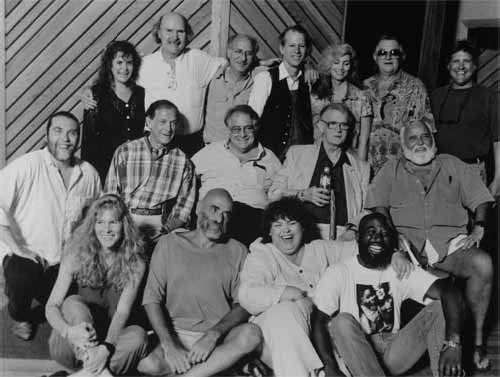 |
| The Bob Gibson Class Reunion in Nashville, July 25, 1994. (top row) Cathryn Craig, Tom Paxton, Peter Yarrow, John Hartford, Emmylou Harris, John Brown, Kyle Lehning; (second row) Dennis Locorriere, Oscar Brand, Bob Gibson, Ed McCurdy, Glenn Yarbrough; (bottom row) Barbara Baily Hutchinson, Shel Silverstein, Spanky McFarlane, Josh White, Jr. |
Friends like Peter, Paul and Mary, Josh White, Jr., Roger McGuinn, Spanky McFarlane, Guy Guilbert, John Brown and Jeff Chouinard organized benefits to help with his medical expenses.
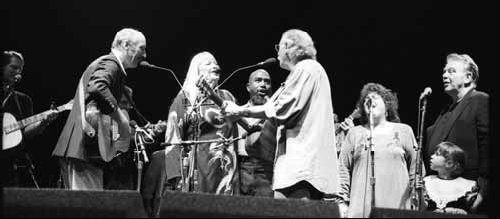 |
| Bob Gibson Benefit Concert, September 27, 1994. Roger McGuinn, Noel Paul Stookey, Mary Travers, Josh White, Jr., Peter Yarrow, Spanky McFarlane, Bob Gibson, Sarah Gibson. |
Bob had left Chicago for his beloved Mendocino but doctors could offer little help. His last move was to Portland, Oregon. It was from there, in September of 1996, he returned to Chicago for the final time to host a farewell party. Friends and family came from far and wide to pay tribute to a man whose life and music had meant so much to so many. Back home in Portland, he died a week later on September 28th. Roger Ebert wrote, "Bob Gibson hosted his last hootenanny and attended his own wake."
The musical legacy of Bob Gibson is still felt by all who embraced his work and the music he cherished so dearly and to which he contributed so much.
info@bobgibsonlegacy.com
© 2006-2017 Bob Gibson Legacy • All rights reserved
Content & Design by M & R Consulting
Webmaster Valerie at
